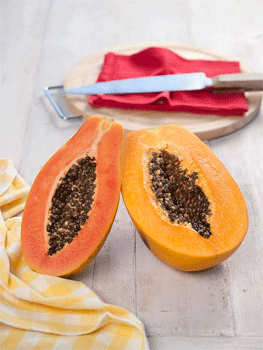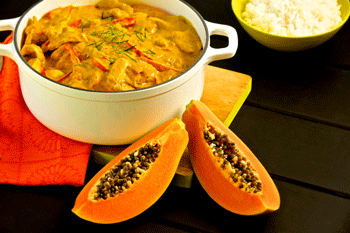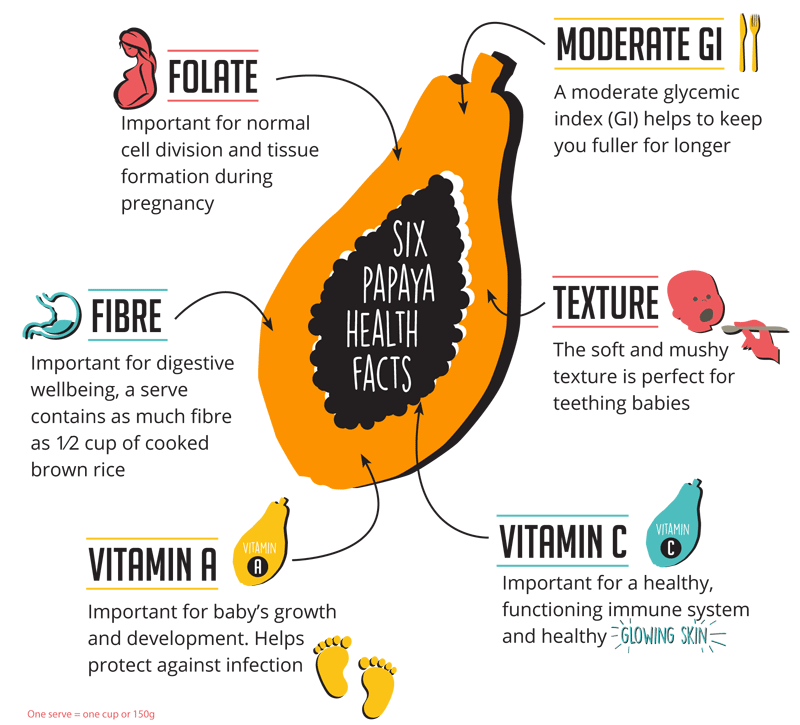Australian Papaya and Papaw

Australian Papaya and Papaw
Plenty of rain and sunshine has resulted in an extra sweet autumn crop for Australian papaya and papaw, with record-breaking numbers forecast this season.
Autumn marks a key peak for the unique tropical fruit, and thanks to its increasing popularity, new plantings will see crop numbers soar.
Third generation papaya grower, Daniel Mackay, is happy with the sweet autumn crop hitting stores.
'We've produced a really big crop this season, with 10% more fruit than last year. The crop has received lots of sunlight, allowing the fruit to sweeten up nicely and develop a full-bodied flavour."
In addition to their tropical taste, both fruits boast a wealth of health benefits, which according to Accredited Practising Dietitian and Australian Papaya ambassador, Caitlin Reid, makes it a great choice to help keep your family healthy.
'The soft consistency of papaya and papaw is perfect for blending into baby food or slicing into pieces for the kids. As well as being tasty, they are an excellent source of vitamin C and a source of folate, which helps growing bodies develop and stay healthy."
Perfectly paired with a squeeze of lime, fresh papaya and papaw are also a delicious addition to smoothies, muffins, or your morning muesli. They can add a refreshing contrast in savoury dishes like curry and when served as a side salsa, their digestive
enzymes help to tenderize meat and fish.
 Papaya and Chicken Curry
Papaya and Chicken Curry
Serves 4
Ingredients
1 tbsp olive oil
¼ cup korma curry paste
and mashed
400ml coconut milk
2 chicken breasts, thinly sliced
1 red capsicum, sliced
1¼ cup basmati rice
Handful of Kafr lime leaves (optional)
Method
Over a low heat, heat oil and korma curry paste in a pan or casserole dish until fragrant.
Add papaya and coconut milk and bring to the boil. Cover with a lid and allow to simmer.
Add chicken and cook until chicken is cooked through.
Add red capsicum and cook for another 2 minutes.
Meanwhile cook basmati rice in a rice cooker or according to directions on packet.
Serve papaya and chicken curry with basmati rice.
Garnish with thinly sliced Kafr lime leaves (optional). Season to taste.
Caitlin Reid's top reasons to enjoy papaya and papaw this autumn:
Firstly, choose a perfectly ripe papaya by opting for fruit that yields under gentle pressure when squeezed. The fruit is fragile so a few smalls spots and blemishes are normal and aren't an indication of quality. If it's a bit hard, ripen your papaya in the fruit bowl then store it in the fridge. Once you dig in, you'll nourish your body in more ways than one:
Strengthen your immunity: One serve of papaya or papaw contains double the RDI of vitamin C, which increases antibody activity and resistance to infection. It also helps release iron from foods.
Eat the rainbow: Papaya's vibrant orange hue comes from carotenoids, powerful antioxidants, which have been associated with the reduced risk of several chronic health conditions including age-related eye disease and heart disease.
Glowing skin: The carotene and vitamin C in papaya and papaw help to ward off free radicals like smoke, tobacco and stress. The unique bundle of antioxidants and water content in papaya and papaw also assist with skin elasticity and hydration. Papaya and papaw are 90% water!
Get to know papaya and papaw
The two fruits can be distinguished by their colour, shape and flavour. Papaya is usually pear shaped with red flesh and a sweeter flavour, while papaw is usually round, with yellow flesh and is less sweet.
Available all year-round, the best time to enjoy papaya is during its peak of autumn and spring, with plenty of great quality fruit on the market at a good price.
For inspiring recipes and information about red papaya and yellow papaw visit www.australianpapaya.com.au and www.facebook.com/papayaaustralia
Share using #aussiepapaya or #australianapapaya

MORE



